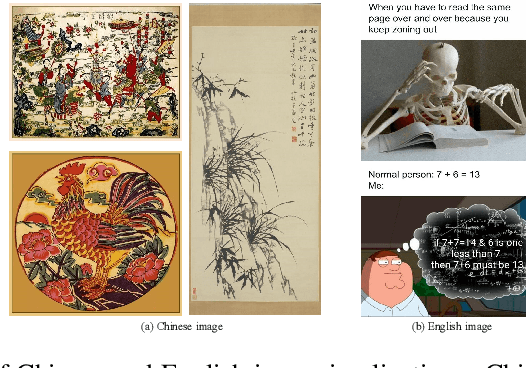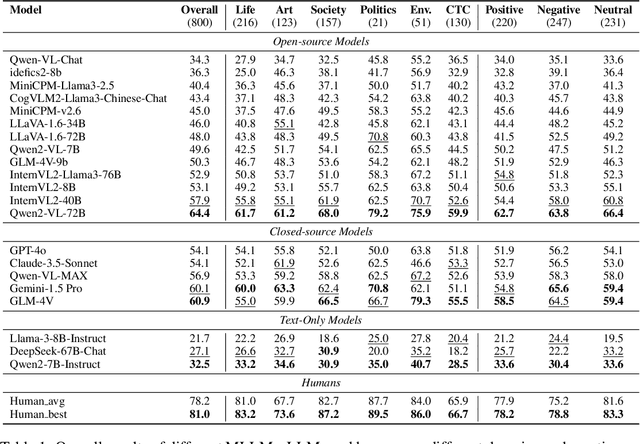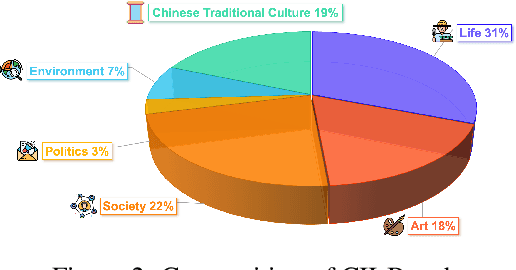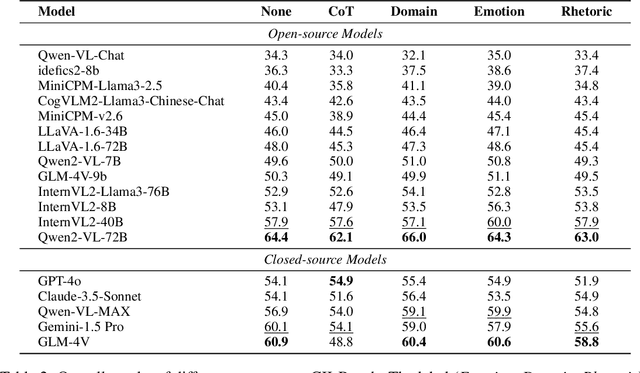Yiming Liang
HiMoR: Monocular Deformable Gaussian Reconstruction with Hierarchical Motion Representation
Apr 08, 2025Abstract:We present Hierarchical Motion Representation (HiMoR), a novel deformation representation for 3D Gaussian primitives capable of achieving high-quality monocular dynamic 3D reconstruction. The insight behind HiMoR is that motions in everyday scenes can be decomposed into coarser motions that serve as the foundation for finer details. Using a tree structure, HiMoR's nodes represent different levels of motion detail, with shallower nodes modeling coarse motion for temporal smoothness and deeper nodes capturing finer motion. Additionally, our model uses a few shared motion bases to represent motions of different sets of nodes, aligning with the assumption that motion tends to be smooth and simple. This motion representation design provides Gaussians with a more structured deformation, maximizing the use of temporal relationships to tackle the challenging task of monocular dynamic 3D reconstruction. We also propose using a more reliable perceptual metric as an alternative, given that pixel-level metrics for evaluating monocular dynamic 3D reconstruction can sometimes fail to accurately reflect the true quality of reconstruction. Extensive experiments demonstrate our method's efficacy in achieving superior novel view synthesis from challenging monocular videos with complex motions.
COIG-P: A High-Quality and Large-Scale Chinese Preference Dataset for Alignment with Human Values
Apr 07, 2025Abstract:Aligning large language models (LLMs) with human preferences has achieved remarkable success. However, existing Chinese preference datasets are limited by small scale, narrow domain coverage, and lack of rigorous data validation. Additionally, the reliance on human annotators for instruction and response labeling significantly constrains the scalability of human preference datasets. To address these challenges, we design an LLM-based Chinese preference dataset annotation pipeline with no human intervention. Specifically, we crawled and carefully filtered 92k high-quality Chinese queries and employed 15 mainstream LLMs to generate and score chosen-rejected response pairs. Based on it, we introduce COIG-P (Chinese Open Instruction Generalist - Preference), a high-quality, large-scale Chinese preference dataset, comprises 1,009k Chinese preference pairs spanning 6 diverse domains: Chat, Code, Math, Logic, Novel, and Role. Building upon COIG-P, to reduce the overhead of using LLMs for scoring, we trained a 8B-sized Chinese Reward Model (CRM) and meticulously constructed a Chinese Reward Benchmark (CRBench). Evaluation results based on AlignBench \citep{liu2024alignbenchbenchmarkingchinesealignment} show that that COIG-P significantly outperforms other Chinese preference datasets, and it brings significant performance improvements ranging from 2% to 12% for the Qwen2/2.5 and Infinity-Instruct-3M-0625 model series, respectively. The results on CRBench demonstrate that our CRM has a strong and robust scoring ability. We apply it to filter chosen-rejected response pairs in a test split of COIG-P, and our experiments show that it is comparable to GPT-4o in identifying low-quality samples while maintaining efficiency and cost-effectiveness. Our codes and data are released in https://github.com/multimodal-art-projection/COIG-P.
YuE: Scaling Open Foundation Models for Long-Form Music Generation
Mar 11, 2025Abstract:We tackle the task of long-form music generation--particularly the challenging \textbf{lyrics-to-song} problem--by introducing YuE, a family of open foundation models based on the LLaMA2 architecture. Specifically, YuE scales to trillions of tokens and generates up to five minutes of music while maintaining lyrical alignment, coherent musical structure, and engaging vocal melodies with appropriate accompaniment. It achieves this through (1) track-decoupled next-token prediction to overcome dense mixture signals, (2) structural progressive conditioning for long-context lyrical alignment, and (3) a multitask, multiphase pre-training recipe to converge and generalize. In addition, we redesign the in-context learning technique for music generation, enabling versatile style transfer (e.g., converting Japanese city pop into an English rap while preserving the original accompaniment) and bidirectional generation. Through extensive evaluation, we demonstrate that YuE matches or even surpasses some of the proprietary systems in musicality and vocal agility. In addition, fine-tuning YuE enables additional controls and enhanced support for tail languages. Furthermore, beyond generation, we show that YuE's learned representations can perform well on music understanding tasks, where the results of YuE match or exceed state-of-the-art methods on the MARBLE benchmark. Keywords: lyrics2song, song generation, long-form, foundation model, music generation
Keeping Representation Similarity in Finetuning for Medical Image Analysis
Mar 10, 2025Abstract:Foundation models pretrained on large-scale natural images have been widely used to adapt to medical image analysis through finetuning. This is largely attributed to pretrained representations capturing universal, robust, and generalizable features, which can be reutilized by downstream tasks. However, these representations are later found to gradually vanish during finetuning, accompanied by a degradation of foundation model's original abilities, e.g., generalizability. In this paper, we argue that pretrained representations can be well preserved while still effectively adapting to downstream tasks. We study this by proposing a new finetuning method RepSim, which minimizes the distance between pretrained and finetuned representations via constraining learnable orthogonal manifold based on similarity invariance. Compared to standard finetuning methods, e.g., full finetuning, our method improves representation similarity by over 30% while maintaining competitive accuracy, and reduces sharpness by 42% across five medical image classification datasets. The code will be released.
SuperGPQA: Scaling LLM Evaluation across 285 Graduate Disciplines
Feb 20, 2025Abstract:Large language models (LLMs) have demonstrated remarkable proficiency in mainstream academic disciplines such as mathematics, physics, and computer science. However, human knowledge encompasses over 200 specialized disciplines, far exceeding the scope of existing benchmarks. The capabilities of LLMs in many of these specialized fields-particularly in light industry, agriculture, and service-oriented disciplines-remain inadequately evaluated. To address this gap, we present SuperGPQA, a comprehensive benchmark that evaluates graduate-level knowledge and reasoning capabilities across 285 disciplines. Our benchmark employs a novel Human-LLM collaborative filtering mechanism to eliminate trivial or ambiguous questions through iterative refinement based on both LLM responses and expert feedback. Our experimental results reveal significant room for improvement in the performance of current state-of-the-art LLMs across diverse knowledge domains (e.g., the reasoning-focused model DeepSeek-R1 achieved the highest accuracy of 61.82% on SuperGPQA), highlighting the considerable gap between current model capabilities and artificial general intelligence. Additionally, we present comprehensive insights from our management of a large-scale annotation process, involving over 80 expert annotators and an interactive Human-LLM collaborative system, offering valuable methodological guidance for future research initiatives of comparable scope.
EfficientLLM: Scalable Pruning-Aware Pretraining for Architecture-Agnostic Edge Language Models
Feb 10, 2025Abstract:Modern large language models (LLMs) driven by scaling laws, achieve intelligence emergency in large model sizes. Recently, the increasing concerns about cloud costs, latency, and privacy make it an urgent requirement to develop compact edge language models. Distinguished from direct pretraining that bounded by the scaling law, this work proposes the pruning-aware pretraining, focusing on retaining performance of much larger optimized models. It features following characteristics: 1) Data-scalable: we introduce minimal parameter groups in LLM and continuously optimize structural pruning, extending post-training pruning methods like LLM-Pruner and SparseGPT into the pretraining phase. 2) Architecture-agnostic: the LLM architecture is auto-designed using saliency-driven pruning, which is the first time to exceed SoTA human-designed LLMs in modern pretraining. We reveal that it achieves top-quality edge language models, termed EfficientLLM, by scaling up LLM compression and extending its boundary. EfficientLLM significantly outperforms SoTA baselines with $100M \sim 1B$ parameters, such as MobileLLM, SmolLM, Qwen2.5-0.5B, OLMo-1B, Llama3.2-1B in common sense benchmarks. As the first attempt, EfficientLLM bridges the performance gap between traditional LLM compression and direct pretraining methods, and we will fully open source at https://github.com/Xingrun-Xing2/EfficientLLM.
Aligning Instruction Tuning with Pre-training
Jan 16, 2025



Abstract:Instruction tuning enhances large language models (LLMs) to follow human instructions across diverse tasks, relying on high-quality datasets to guide behavior. However, these datasets, whether manually curated or synthetically generated, are often narrowly focused and misaligned with the broad distributions captured during pre-training, limiting LLM generalization and effective use of pre-trained knowledge. We propose *Aligning Instruction Tuning with Pre-training* (AITP), a method that bridges this gap by identifying coverage shortfalls in instruction-tuning datasets and rewriting underrepresented pre-training data into high-quality instruction-response pairs. This approach enriches dataset diversity while preserving task-specific objectives. Evaluations on three fully open LLMs across eight benchmarks demonstrate consistent performance improvements with AITP. Ablations highlight the benefits of adaptive data selection, controlled rewriting, and balanced integration, emphasizing the importance of aligning instruction tuning with pre-training distributions to unlock the full potential of LLMs.
A Progressive Transformer for Unifying Binary Code Embedding and Knowledge Transfer
Dec 15, 2024Abstract:Language model approaches have recently been integrated into binary analysis tasks, such as function similarity detection and function signature recovery. These models typically employ a two-stage training process: pre-training via Masked Language Modeling (MLM) on machine code and fine-tuning for specific tasks. While MLM helps to understand binary code structures, it ignores essential code characteristics, including control and data flow, which negatively affect model generalization. Recent work leverages domain-specific features (e.g., control flow graphs and dynamic execution traces) in transformer-based approaches to improve binary code semantic understanding. However, this approach involves complex feature engineering, a cumbersome and time-consuming process that can introduce predictive uncertainty when dealing with stripped or obfuscated code, leading to a performance drop. In this paper, we introduce ProTST, a novel transformer-based methodology for binary code embedding. ProTST employs a hierarchical training process based on a unique tree-like structure, where knowledge progressively flows from fundamental tasks at the root to more specialized tasks at the leaves. This progressive teacher-student paradigm allows the model to build upon previously learned knowledge, resulting in high-quality embeddings that can be effectively leveraged for diverse downstream binary analysis tasks. The effectiveness of ProTST is evaluated in seven binary analysis tasks, and the results show that ProTST yields an average validation score (F1, MRR, and Recall@1) improvement of 14.8% compared to traditional two-stage training and an average validation score of 10.7% compared to multimodal two-stage frameworks.
Can MLLMs Understand the Deep Implication Behind Chinese Images?
Oct 17, 2024



Abstract:As the capabilities of Multimodal Large Language Models (MLLMs) continue to improve, the need for higher-order capability evaluation of MLLMs is increasing. However, there is a lack of work evaluating MLLM for higher-order perception and understanding of Chinese visual content. To fill the gap, we introduce the **C**hinese **I**mage **I**mplication understanding **Bench**mark, **CII-Bench**, which aims to assess the higher-order perception and understanding capabilities of MLLMs for Chinese images. CII-Bench stands out in several ways compared to existing benchmarks. Firstly, to ensure the authenticity of the Chinese context, images in CII-Bench are sourced from the Chinese Internet and manually reviewed, with corresponding answers also manually crafted. Additionally, CII-Bench incorporates images that represent Chinese traditional culture, such as famous Chinese traditional paintings, which can deeply reflect the model's understanding of Chinese traditional culture. Through extensive experiments on CII-Bench across multiple MLLMs, we have made significant findings. Initially, a substantial gap is observed between the performance of MLLMs and humans on CII-Bench. The highest accuracy of MLLMs attains 64.4%, where as human accuracy averages 78.2%, peaking at an impressive 81.0%. Subsequently, MLLMs perform worse on Chinese traditional culture images, suggesting limitations in their ability to understand high-level semantics and lack a deep knowledge base of Chinese traditional culture. Finally, it is observed that most models exhibit enhanced accuracy when image emotion hints are incorporated into the prompts. We believe that CII-Bench will enable MLLMs to gain a better understanding of Chinese semantics and Chinese-specific images, advancing the journey towards expert artificial general intelligence (AGI). Our project is publicly available at https://cii-bench.github.io/.
I-SHEEP: Self-Alignment of LLM from Scratch through an Iterative Self-Enhancement Paradigm
Aug 15, 2024



Abstract:Large Language Models (LLMs) have achieved significant advancements, however, the common learning paradigm treats LLMs as passive information repositories, neglecting their potential for active learning and alignment. Some approaches train LLMs using their own generated synthetic data, exploring the possibility of active alignment. However, there is still a huge gap between these one-time alignment methods and the continuous automatic alignment of humans. In this paper, we introduce \textbf{I-SHEEP}, an \textbf{I}terative \textbf{S}elf-En\textbf{H}anc\textbf{E}m\textbf{E}nt \textbf{P}aradigm.This human-like paradigm enables LLMs to \textbf{continuously self-align from scratch with nothing}. Compared to the one-time alignment method Dromedary \cite{sun2023principledriven}, which refers to the first iteration in this paper, I-SHEEP can significantly enhance capacities on both Qwen and Llama models. I-SHEEP achieves a maximum relative improvement of 78.2\% in the Alpaca Eval, 24.0\% in the MT Bench, and an absolute increase of 8.88\% in the IFEval accuracy over subsequent iterations in Qwen-1.5 72B model. Additionally, I-SHEEP surpasses the base model in various standard benchmark generation tasks, achieving an average improvement of 24.77\% in code generation tasks, 12.04\% in TrivialQA, and 20.29\% in SQuAD. We also provide new insights based on the experiment results. Our codes, datasets, and models are available at \textbf{https://anonymous.4open.science/r/I-SHEEP}.
 Add to Chrome
Add to Chrome Add to Firefox
Add to Firefox Add to Edge
Add to Edge